The long wait was worth it! After munching through countless prototypes, RockShox have finally released the brand new BoXXer fork, which was redesigned from the ground up to include chunkier 38 mm stanchions, Rockshox’s latest Charger 3 damper and a new air spring. We had the exclusive opportunity to test the fork in the mecca of mountain biking – Whistler!

With over 25 years of rowdy riding under its belt, the RockShox BoXXer is arguably the seasoned veteran amongst mountain bike forks. As the downhill-specific fork model in RockShox’s portfolio, the BoXXer has actively contributed to legendary race runs, Rampage trophies, and countless high-five moments in bike parks all over the planet. After remaining untouched for quite a long time, the BoXXer got one of the most major overhauls in its long history. The American manufacturer redesigned the fork from the ground up, replacing the 35 mm stanchions of its predecessor with chunkier 38 mm stanchions. And while they were at it, Rockshox’s engineers threw in a new Charger 3 damper and ButterCups, which come standard with all high-end versions of the ZEB, Lyrik and Pike. However, there’s a lot more to the new BoXXer, which also features a new DebonAir+ air spring, and many other useful features. The new RockShox BoXXer suspension fork is available both in 27.5″ and 29″ versions and generates between 180 and 200 mm of travel. Our test fork comes in the fast-looking “Electric Red” finish, but black is also an option. Furthermore, the new BoXXer is also available as an easily upgradable entry-level model.
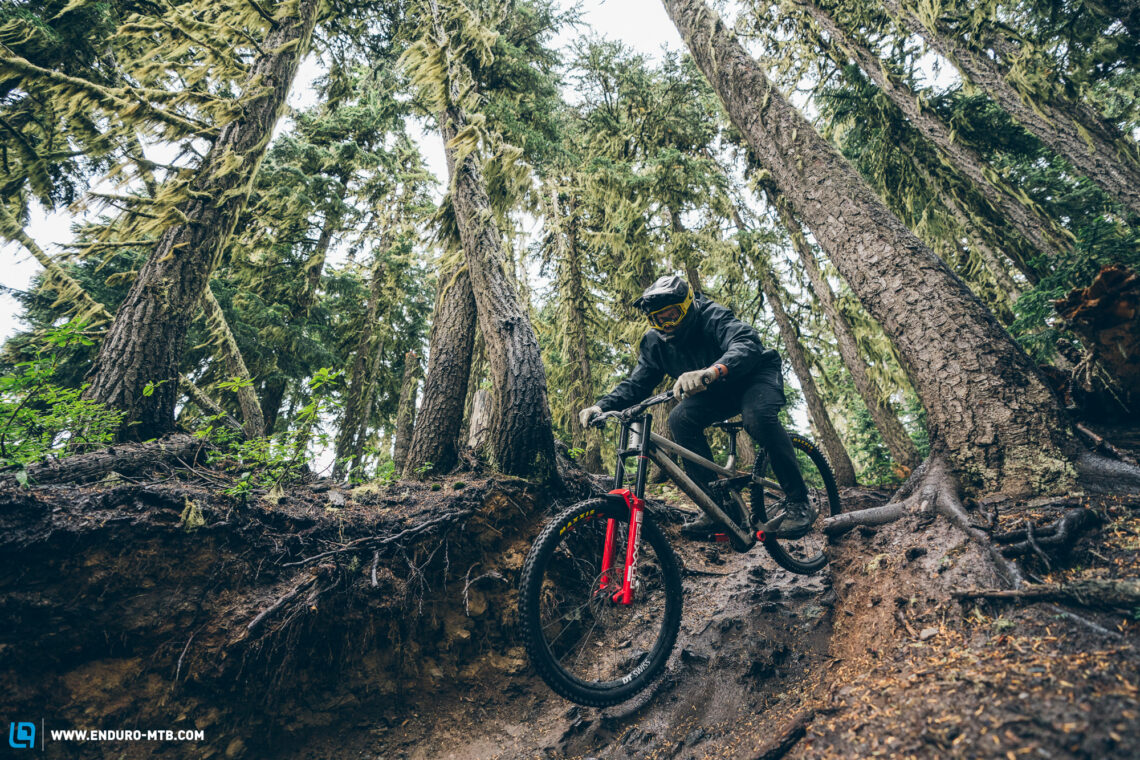
The history and development of RockShox Boxxer forks
It’s 1995, and while many of us are still wobbling around with stabilisers, RockShox introduce their first downhill-specific suspension fork, the Judy DH, which takes on the downhill tracks of the time with a proud 80 mm of travel and 28 mm stanchions – and even has a rebound dial! Fast forward one year, and Rockshox unveiled their first ever double crown fork, the BoXXer. Only 20 prototypes were made and handed out to some of today’s mountain bike legends – Steve Peat was one of them. In its first iteration, the Boxxer relied on 32 mm stanchions and generated a generous 150 mm of travel, which was bonkers at that time. Of course, mountain bikes were still rolling on 26″ wheels and forks employed steel springs. It was not until 1998 that the first BoXXer model made it to the market.

In the year 2000, Rockshox launched their Blackbox programme, which is to this day the American manufacturer’s proving ground for new performance products. In a nutshell, both SRAM and Rockshox use the race circuit to develop and prove new technologies. In the same year, the current BoXXer model was upgraded to 180 mm of travel. However, it wasn’t until 4 years later (2004) that Rockshox introduced a 200 mm variant of the BoXXer, which is now considered standard in the downhill segment. At the same time, engineers started experimenting with air springs, which have long established themselves on today’s suspension market.
In 2008, SRAM announced another big upgrade, introducing a brand-new BoXXer with bigger 35 mm stanchions and their first Mission Control damper, which featured externally adjustable high- and low-speed controls of both the rebound and compression circuits. A short time later, they introduced a new black finish, which is still the same you get with modern RockShox forks. With the introduction of the Charger 1 damper for the 2014 BoXXer came the shift to 27.5″ wheels, while 5 years later, it was time for a 29″ BoXXer with Charger 2.1 damper.

The development of the new RockShox BoXXer fork
Downhill enthusiasts had to wait a long time, because the previous iteration of the BoXXer has been around for almost 5 years. What made the wait even more painful is the fact that several prototypes of the new 38 mm fork were spotted in the World Cup circuit over the years. However, RockShox never lost focus, and put a huge amount of effort into developing the new fork. In September 2021, shortly after the double Snowshoe World Cup, Rockshox called a first secret test session with their pro teams. This brought to light the first problems, because building the stiffest fork possible might not be rocket science, but can easily lead to arm pump, harsh feedback and a lack of grip – which is exactly what Rockshox’s test riders felt. Instead, it’s much more important to find the right balance between torsional stiffness and lateral stiffness (fore-aft) to ensure optimal steering precision and good ride quality. Since fore-aft stiffness is determined primarily by the thickness of the stanchions and the three clamps, RockShox started shaving off material little by little until they reached the optimal level of compliance. This was done using the latest FEA (Finite Element Analysis) tools, which allow engineers to predict and understand how an object might behave under various physical conditions by analysing the structure’s stress load and load distribution, and informs decisions on the thickness of the materials through digital simulations. The FEA system is also used to calculate torsional stiffness (i.e. how much the fork twists), which is influenced primarily by the triple clamp. Of course, none of the high-tech palaver is meaningful if the fork feels like a cattle grid on the trail, which is why we saw several prototypes of the RockShox BoXXer being used at World Cup races. Riders like Vali Höll and Loris Vergier have already secured World Cup victories and world-champ titles with the new BoXXer, and, above all, collected countless impressions of the new fork. Follow this link if you want to know more about the development of the new RockShox BoXXer.
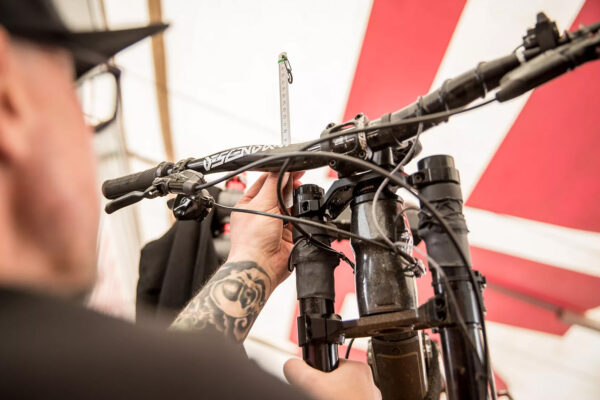
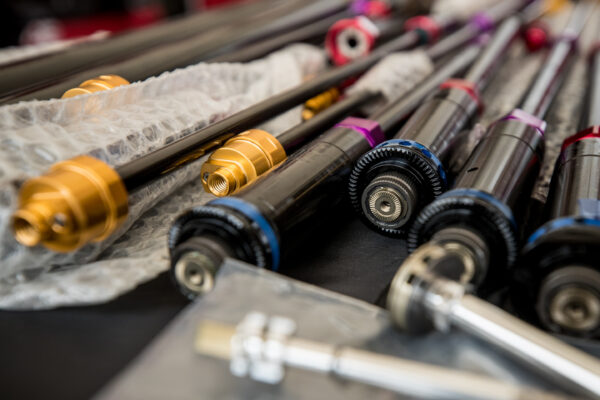
The new RockShox Boxxer fork in detail
As already mentioned, the BoXXer borrows several features from its smaller siblings, the ZEB, Lyrik and Pike. Amongst them is the Charger 3 damper, which relies on an Internal Floating Piston (IFP) design, and was tuned specifically for the new BoXXer. With the IFP system, the oil displaced by the piston rod is pressurised by a spring-loaded piston. The permanent compression and strict separation prevent oil and air from mixing. RockShox also revised the high- and low-speed compression circuits to provide more precise and, above all, more independent damping adjustments compared to the previous Charger 2.1 version. In the latest Charger 3 damper, the two circuits are connected in series, meaning that the oil first passes through the High Speed circuit before flowing into the Low Speed circuit. This is meant to reduce “cross-talk” between the two circuits and provide independent High Speed Compression (HSC) and Low Speed Compression (LSC) adjustments. The 3.0 damper has 15 clicks of low-speed and 5 clicks of high-speed compression adjustment. The clicks are well defined, while the dials are extremely intuitive to use, which, together with the clear labelling invites you to play around with your settings – counting clicks is a thing of the past! The low speed rebound adjustment has 18 clicks.
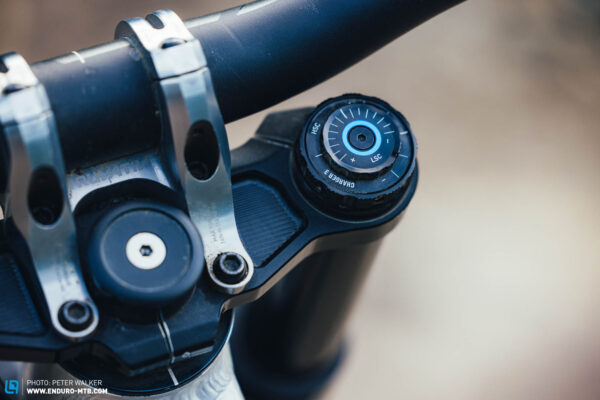

The new BoXXer also employs Rockshox’s proprietary ButterCups. These are small rubber elastomers attached to the end of both the damper and air spring which are designed to absorb high-frequency vibrations and small impacts even before the air spring starts working. According to Rockshox, the ButterCups work their magic in the first 10 mm of travel, helping reduce arm pump significantly. The new BoXXer also features bleed ports on the back of the lowers, allowing you to equalise the pressure inside the fork with atmospheric changes. The bleed ports have been revised too, and now employ a small ratchet wheel instead of the small metal pins found on the ZEB and Lyrik.
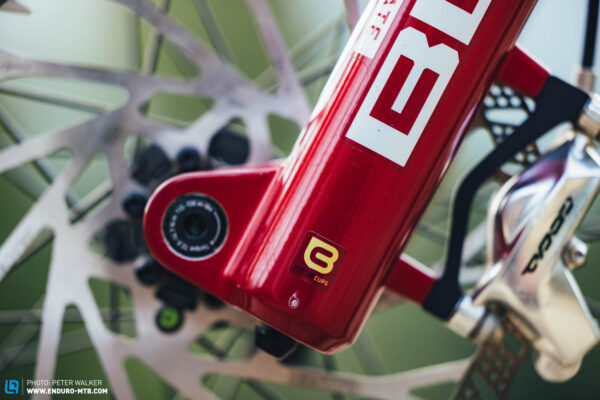
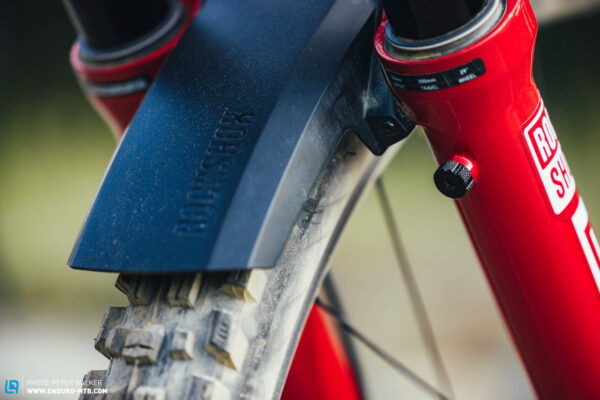
The new DebonAir+ air spring of the RockShox BoXXer fork
The DebonAir+ air spring of the BoXXer was redeveloped from the ground up and is designed to provide a linear ride feeling similar to that of a coil spring. To achieve this, Rockshox employ their TwinTube design, which relies on an additional tube within the upper tube to decrease the piston diameter, reducing the ratio between the piston and air spring shaft. In addition, the piston rod diameter has grown from 10 mm to 14 mm and is now hollow, which further increases the volume of the negative chamber, because the internals of the piston rod are now connected directly to the negative chamber. This is meant to improve the fork’s response. According to RockShox, this technology also allows for better control of the different spring volumes – i.e. positive, negative and the trapped air in the dip tubes. Furthermore, an improved bottom-out bumper is supposed to absorb really hard impacts. Of course, this new air spring can also be adjusted with volume spacers.
The new oil flow ports of the RockShox BoXXer fork
To optimise lubrication and ensure more even air distribution with harsh bottom-outs, Rockshox engineers drilled a couple of oil flow ports in the upper tubes contained within the lower legs. These are designed to retain the lubricant at the bottom of the lower legs and release it through the lower leg assembly as the fork reaches the end of the stroke. Needless to say, the additional lubrication reduces friction. With nasty bottom outs, the holes also allow for better distribution of the air molecules in the lower legs, which is meant to provide a more linear feeling.

The new lower leg assembly and stanchions of the RockShox BoXXer fork
Needless to say, the thicker 38 mm stanchions required new fork crowns. As usual, they’re machined and anodised, and available in different heights to suit different head tube lengths. The new length markings on the steerer tube are extremely practical, making it easier to cut to size without having to measure beforehand. Furthermore, Rockshox printed the recommended torque settings directly on the crowns, so you don’t have to fiddle around with your mobile while trying to install the fork.
Like its predecessor, the new RockShox BoXXer relies on a 20 mm thru axle and 110 mm boost hub standard, meaning that you can use it with your existing wheel if you’re just upgrading the fork. The brake mount is designed to take a 200 mm brake rotor directly and accepts bigger rotors up to 220 mm with an adapter. Another practical feature is the integrated mud guard, which can be secured directly to the triple clamp with 4 bolts and is extremely quiet on the trail – and it’s included in the box!
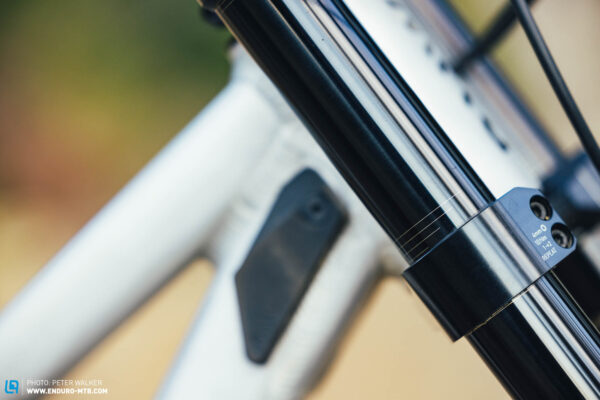
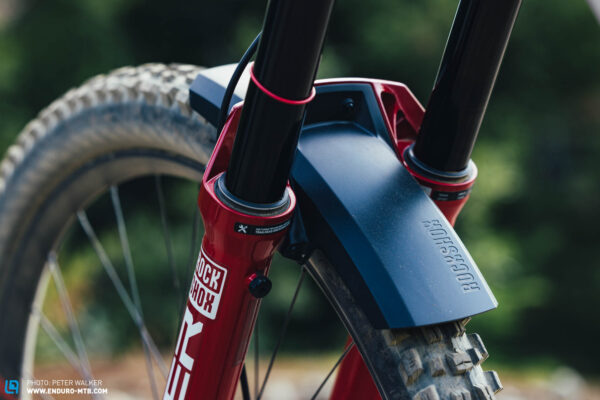
Variants and prices for the new RockShox BoXXer fork
The new RockShox BoXXer fork will be available in two versions, the Ultimate flagship model and the cheaper Base entry-level variant. However, the latter is only available as an OEM component, meaning that it will be used by bike manufacturers for complete builds. Both models will be available as a 27.5″ and 29″ variant. To compensate for the thicker stanchions, Rockshox also had to change the fork’s offsets: as a result, the new BoXXer now comes in 3 versions with 44 mm (27.5” only), 48 mm, and 52 mm (29” only) offset. In addition, all BoXXer models allow you to reduce the travel from 200 mm to 190 and 180 mm. As far as finish goes, the Ultimate flagship model is available in two colours, “Electric Red” and “Gloss Black”. Base models forgo the ButterCups, and rely on a more basic Charger 3 RC damper, which only offers externally adjustable low-speed compression. That said, for € 399 you can upgrade the damper to the RC2 variant. If you want to change the travel, you can buy the respective DebonAir+ air spring inclusive of ButterCups for € 113.
| RockShox BoXXer | Ultimate | Base |
|---|---|---|
| Wheel size | 27,5” or 29” | 27,5” or 29” |
| Offset | 44 mm (27,5”) 48 mm (both) 52 mm (29”) |
44 mm (27,5”) 48 mm (both) 52 mm (29”) |
| Damper and air spring | Charger 3 RC2 with Buttercups | DebonAir+ with Buttercups | Charger 3 RC DebonAir+ |
| Weight (200 mm / 48 mm) | 2,840 g | 2,680 g |
| Price | € 2,279 | Only available as as an OEM component |
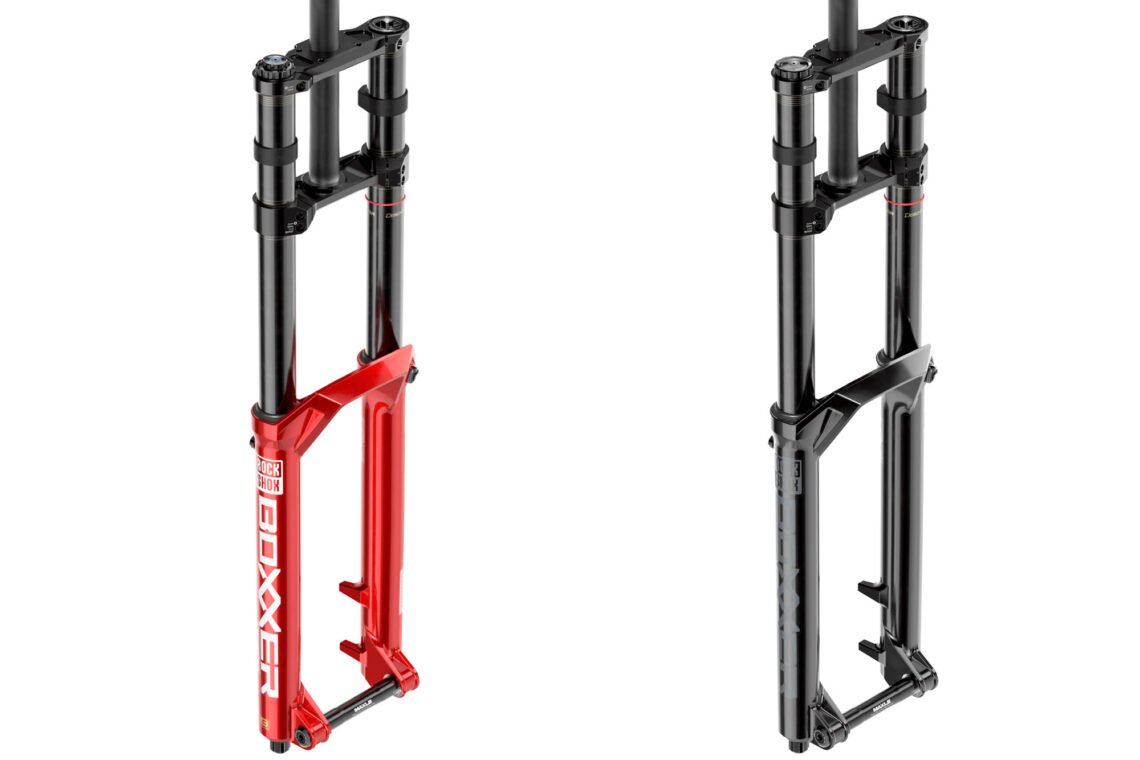
New RockShox BoXXer fork first ride review
Like all Rockshox suspension components, the new BoXXer can be set up with the help of the Trailhead app. By typing in the serial number, you’ll get instant access to your fork’s basic information, including service instructions and available upgrade kits – and, most importantly, you’ll find the tuning recommendations provided by the RockShox development teams. We recommend using these settings as a starting point and tuning the fork according to your personal taste and riding style – although we didn’t have to make any changes to our test fork. The new BoXXer handles pressures of up to 260 psi, leaving lots of room for adjustments while offering plenty of protection from harsh bottom-outs, even without volume spacers.
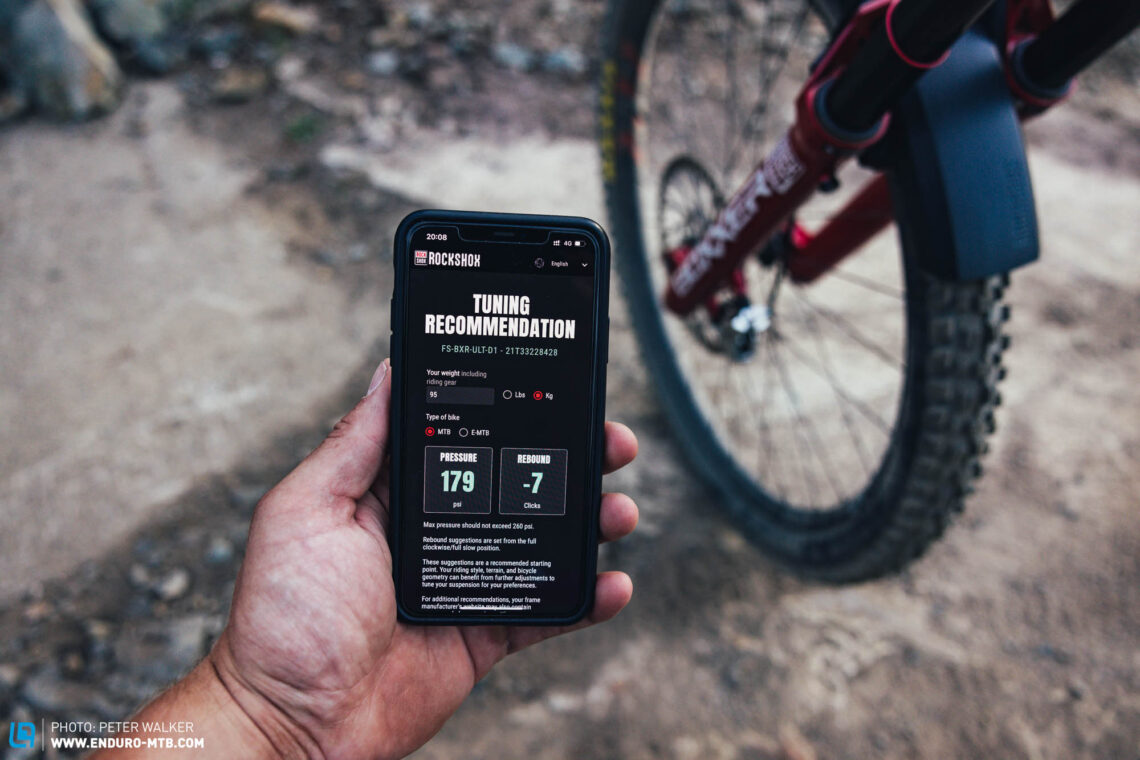
For this test, we bolted the new RockShox BoXXer fork to a RAAW Yalla! Since we arrived in Whistler a few weeks before the official Rockshox launch, we were able to get a taste of the trails and conditions with the current BoXXer fork before switching to the brand new one.

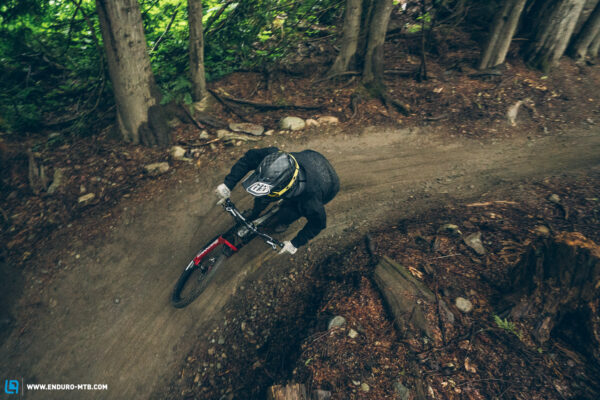
The first thing you’ll notice when riding with the new BoXXer is how smooth it feels, eagerly filtering out the bike park’s hardpack and gobbling up small hits and brake bumps. It’s a bit like having your personal shaper smoothing out the trail ahead for you! When braking in rough terrain and deep brake bumps, you’ll get the first big surprise, because what at first feels unfamiliar turns out to be one of the fork’s biggest innovations. Under braking, the fork stiffens up in the mid stroke, preventing you from diving headfirst and thus ensuring good balance, while at the same time filtering out bumps and generating good traction up front. This allows you to actively pump through corners and berms without the fork sinking into its travel, making it significantly easier to hold your line. The excellent mid-stroke support also helps you collect air miles, because the new BoXXer provides tons of support when pulling off kickers and ledges.
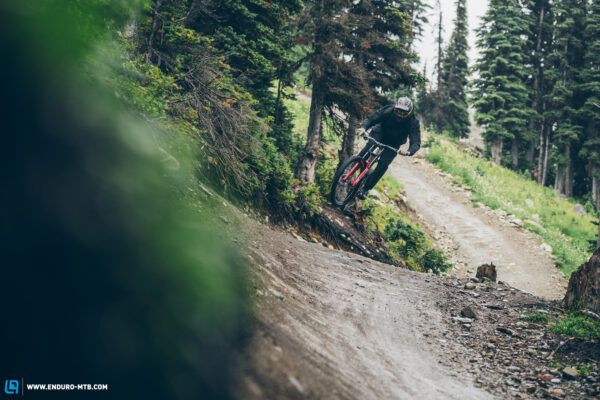

Even when ploughing through nasty rock gardens and root carpets and at Mach 10 – which is what triggers the annoying ping-pong effect on the previous model – the latest descendant of the BoXXer dynasty keeps the line with stoic composure, filtering out lateral impacts much more efficiently than its predecessor and thus making it easier to control the bike and focus on the trail ahead. If you do manage to bottom it out eventually, the BoXXer takes the hit with great nonchalance, without blowing your hands off the handlebars – the bottom-out bumper really seems to be working! In addition, RockShox did a great job at tuning the damper for the BoXXer’s intended use, making it easy to find a sensible setup just by adding (or removing) a few clicks of compression damping when you want to adapt the fork to a different type of trail or unusual conditions.
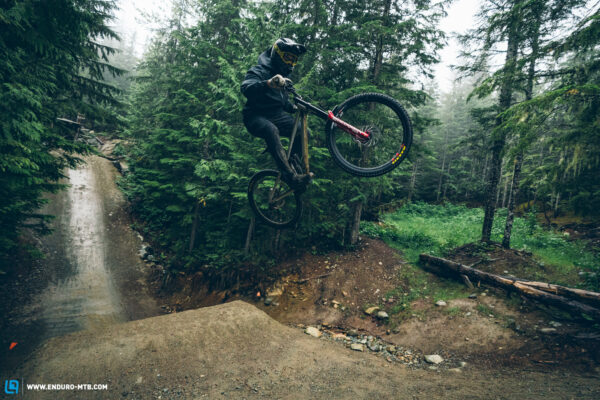
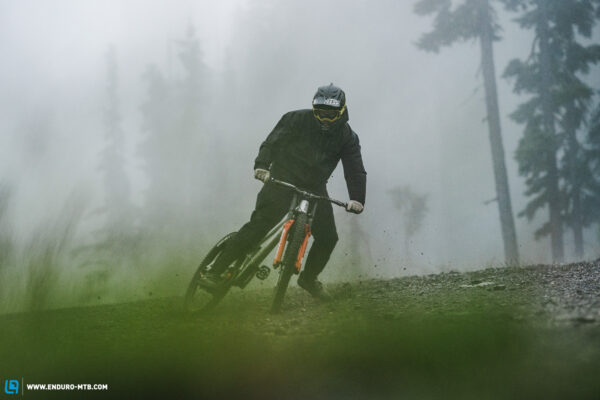
Our conclusions about the new RockShox BoXXer fork
The new RockShox BoXXer has undergone one of the biggest overhauls in its history – and the long wait was worth it! On the trail, the new BoXXer offers a buttery smooth ride without sinking too deep into its travel, filtering out nasty vibrations and ensuring that you always stay in control. At the same time, it bails you out with bigger impacts, absorbing even the nastiest hits with stoic composure.
Tops
- Excellent mid-stroke support
- Excellent small-bump sensitivity generates plenty of grip
- Practical innovations such as the integrated mud guard
Flops
- Base model currently only available as an OEM component
For more information about the new RockShox BoXXer fork, visit Rockshox’s website.

Did you enjoy this article? If so, we would be stoked if you decide to support us with a monthly contribution. By becoming a supporter of ENDURO, you will help secure a sustainable future for high-quality mountain bike journalism. Click here to learn more.
Words: Peter Walker Photos: Anthony Smith, Peter Walker, Andy Vathis









